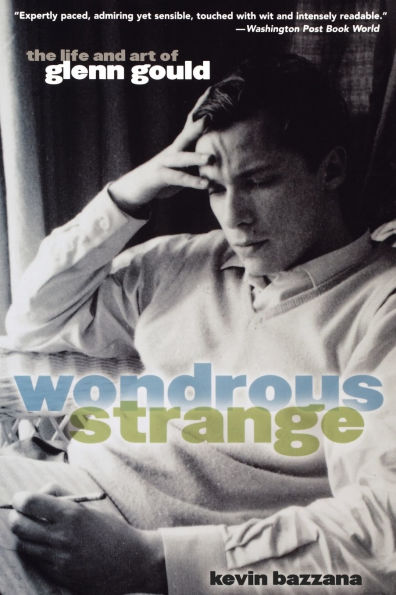Read an Excerpt
When Gould entered the Toronto Conservatory, his schooling – and everything else in his life – already took a back seat to music. As early as January 1943, the Conservatory was in contact with his school to ask for special consideration in accommodating his musical studies. Bert eventually made arrangements with Malvern’s principal and the board of education for the boy to attend school only in the morning and to devote the afternoon to music, either taking lessons or practising at home, and to work with tutors in the evening to catch up on the schoolwork he missed. He maintained this split schedule to the end of high school, and later remembered the “enormous goodwill and generosity of the staff” at Malvern, where, he knew, some regarded him as a nuisance. Though he was often absent in high school, he never dropped out; he was enrolled and studying to the spring of 1951 – that is, to the end of Grade 13, then the final year of high school in Ontario. He did not, however, complete the requirements for formal graduation, because, he later told a friend, he refused to take P.E. In fact, Gould spent more time in high school than most. Though he skipped Grade 3, he did not finish Grade 13 until he was almost nineteen. He took six school years to complete Grades 9 through 13 – which is to say he required two years to finish one of those grades (probably Grade 11, in which year his professional career began).
At the conservatory, his progress was swifter and more exceptional. On June 15, 1945, at the age of twelve, he passed, with the highest marks of any candidate, his examination in piano for the ATCM diploma (Associate, Toronto Conservatoryof Music). He passed his written theory exams a year later, and was awarded the Associate diploma, with highest honours, at a ceremony on October 28, 1946. Thus it is not literally correct, as is always reported, that Gould became an Associate at the age of twelve, but we can at least say that the conservatory considered him, at twelve, to have reached professional standing as a pianist – which is impressive enough. On November 29, 1945, in a conservatory recital, he played the first movement of Beethoven’s Fourth Piano Concerto, with Guerrero accompanying, and he played the movement again, on May 8, 1946, at one of the conservatory’s Annual Closing Concerts in Massey Hall, this time with the Conservatory Symphony Orchestra, conducted by the principal, Ettore Mazzoleni – his first performance with an orchestra. He “had to keep the conductor waiting while he fumbled with a bothersome button on his doublebreasted coat,” Fulford reported in the 9-D Bugle, but the local critics were mostly impressed. One pronounced him a genius and compared his singing tone to that of de Pachmann; another noted a narrow dynamic range and phrasing that was “a little choppy” – all of which sounds like the pianist we know.
Gould first appeared in a music competition as a five-year-old, on August 30, 1938, at the CNE (he won no prizes); otherwise, his experience in competitions was limited to appearances in the first three annual Kiwanis Music Festivals. Events of this kind, involving thousands of children, had been fixtures on the English-Canadian music scene from the beginning of the twentieth century, and many people perceived them as a healthy force for cultural betterment (they encouraged young people to play “the right kind of music in the right way,” Ernest MacMillan said). The model, once again, was imported. “The music festival is a peculiarly British institution,” Geoffrey Payzant wrote in 1960; “in our time only the British could make a virtue out of music-making in public under the conditions of an athletic contest. Love of competition and the fair-play tradition are components of the image we all have of the typical Briton.” As in the annual Dominion Drama Festival, most of the adjudicators were imported from England, and their condescension was sometimes palpable. (As Payzant wrote, “There is one detestable type of British adjudicator that has become a stock figure in this country” – namely, the colonialist who “arrives with the intention of being a light unto the Gentiles.”) The goal of such events was reinforcement not just of British ideals of music, but of British manners and values. Deportment was a priority. In the 1966 article “We Who Are About to Be Disqualified Salute You!” Gould parodied the “superannuated British academicians” he had encountered at the festivals, with their “aura of charity and good fellowship”: “I say, that’s jolly good, Number 67 – smashing spirit and all that. Have to dock you just a point for getting tangled at the double bars, though. Four times through the old exposition is a bit of a good thing, what?”



